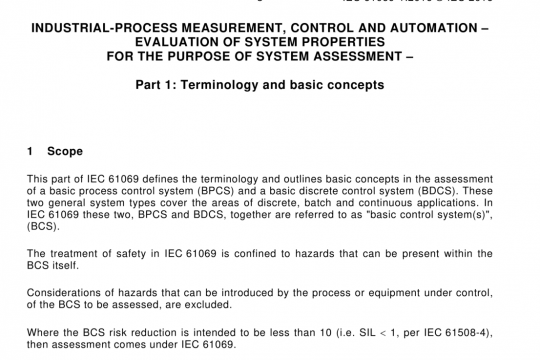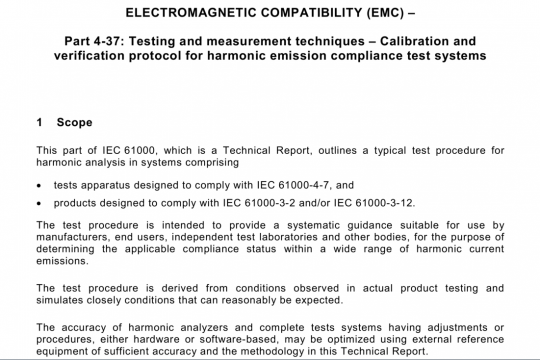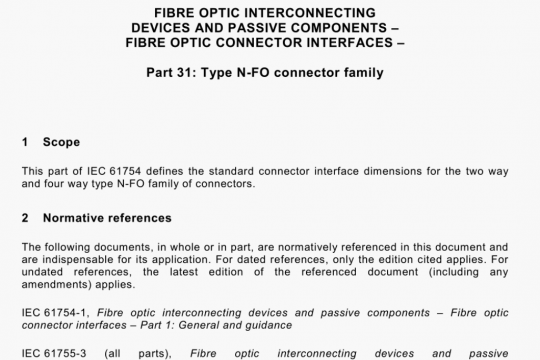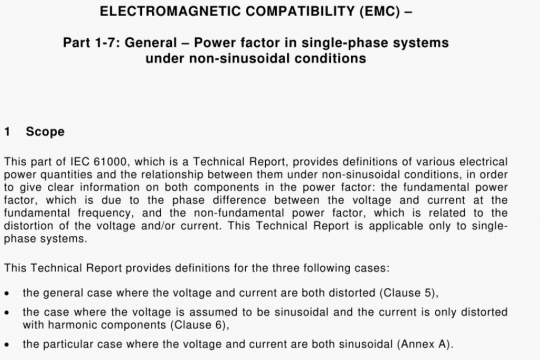IEC 62597 pdf free download
IEC 62597 pdf free download.Magnetic field levels generated by electronic and electrical apparatus in the railway environment with respect to human exposure – Measurement procedures.
4 Measurement procedure
4.1 General
In railways three electromagnetic sources can affect human beings: rolling stock, fixed power supply installation and signalling equipment.
According to generic EMF standard IEC 62311, there are two separate summation regimes for simultaneous exposure to fields of different frequencies. They depend on the effects of the exposure. In the frequency range from 1 Hz to 10 MHz the electrical stimulation is relevant and the underlying basic restriction is induced current density. In the frequency range from 100 kHz to 300 GHz, thermal effects are relevant.
As the detectable emission of rolling stock, fixed power supply installation and signalling equipment is in the frequency range from DC up to 20 kHz. measurements, simulation and calculation are restricted to this range. Accordingly only one summation regime is applied. In this frequency range the magnetic field is dominant and the electric field can be neglected.
As power of signalling equipment is low in comparison with other sources of EMF In the railway environment, its contribution can be neglected.
The measurement procedure of the whole railway system is divided into two cases.
Case 1: Rolling stock (see 4.2)
– measurements Inside rolling stock, and
– measurements outside rolling stock (on platform or alternative).
Case 2: Fixed installation (see 4.3)
– measurement of existing railway infrastructure,
– simulation/calculation of worst case situation (e.g. bridges, level crossing, maximum possible current in overhead contact line or catenary, third rails).
NOTE 1 Compliance of rolling stock can be demonstrated with the first explained case. Compliance of infrastructure can be demonstrated with the second explained case.
For the apparatus, systems and fixed installations in railway environment there are basic restrictions for general public and workers specified in ICNIRP, IEEE and other country- specific documents (see Bibliography).
With compliance of both cases, it can be assumed that the whole railway system is in compliance with the regulations referenced in this document.
NOTE 2 The process defined in this subclause applies also to demonstrate the compliance of railway equipment with active implantable medical devices.
Subclause 4.2 defines the measurement points in established areas inside and outside rolling stock.
Subclause 4.3 defines the measurement points in established areas in fixed installation and gives details regarding simulation/calculation.
Subclause 4.4 defines the test conditions during the measurement of the magnetic field.
4.2.2 Accessible areas for workers inside rolling stock
The measurements indicate the emissions of the train equipment in standstill and dynamic condition (see 4.4.1).
Measurements shall be carried out close to the sources of emission of the train (e.g. power converters, power cables and power inductors) where workers usually can be in normal operating conditions of train and appliance and at the driver seat. The measurement heights above the floor shall be 0,9 m and 1.5 m. The horizontal measuring distance to the walls is 0,3 m or at the minimum distance (> 0,3 m) where workers can be.
4.2.3 Public areas inside rolling stock
The measurements indicate the emissions of the train equipment in standstill and dynamic condition (see 4.4.1).
Measurements shall be carried out at the closest possible position of the sources of emission of the train (e.g. power converters, power cables and power inductors), where public can be. In this case then the measurement heights above the floor of all the public areas shall be 0,3 m, 0,9 m and 1,5 m. The horizontal measuring distance to the walls is 0,3 m or at the minimum distance (> 0,3 m) where public can be.
4.2.4 Areas outside rolling stock (public and workers)
The measurements close to rolling stock indicate the emissions of the train equipment in standstill condition (see 4.4.1) in 0,3 m horizontal distance to the train enclosure at the closest possible position of the sources of emission of the train (e.g. power converters, power cables and power Inductors) at 0,5 m, 1,5 m and 2,5 m height from the top of the running rails.IEC 62597 pdf download.




